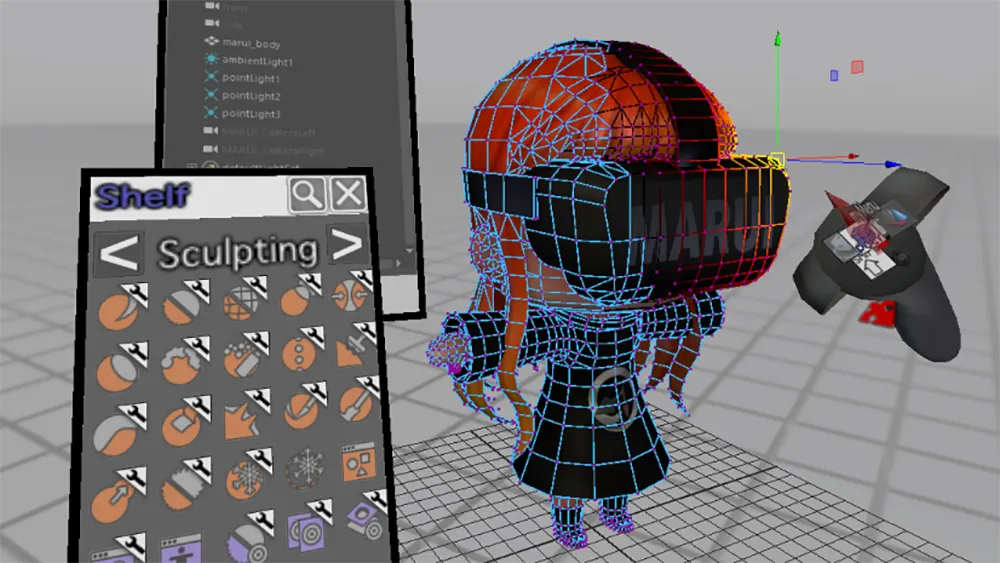Maya, the paid tool from Autodesk, and Blender, a free and open source alternative, are two of the most popular 3D creation tools in the industry. Maya is the tool used to create the 3D assets for countless films, TV shows, and video games. Blender is used by hobbyist projects, but is also used by large organisations such as NASA.
Because neither Maya nor Blender support virtual reality, Japanese startup MARUI-PlugIn developed plugins for each application to add VR support; which they call ‘MARUI’ and ‘BlenderXR’. MARUI is a paid plugin ($50/month or $550 lifetime) for Maya, whereas BlenderXR, just like Blender itself, is free and open source with optional donations supporting it.
MARUI supports Oculus Rift, HTC Vive, and all Windows MR headsets, while BlenderXR supports all these and the eye tracking PC VR headset ‘FOVE 0’ too.
For many creators, being able to see and manipulate assets at real scale directly with your hands and to look around it by simply moving your head is a paradigm shift from current monitor-based workflows. The folks behind the MARUI-Plugin claim that VR can reduce the cost of 3D production by up to 50%. The plugins aren’t focused on the full range of features for Maya or Blender. Instead, the company is focusing on design and animation. Using your hands to directly manipulate parts of the model that should move can be far more intuitive than the current approach of trying to move and rotate elements in 3D space with a mouse & keyboard.
[gfycat data_id=”MixedMeanHalcyon”]
At Oculus Connect 5, Oculus introduced a system for Rift called “Hybrid Apps”, which could be useful if the approach sees adoption by the likes of Blender or Maya in VR. That still hasn’t happened, so it looks like 3rd party plugins will be the go-to approach for now. For BlenderXR, the plug-in builders are embracing the community spirit of Blender by polling the community as to which features should come next. For MARUI, development will follow the priorities of its paying customers. Recently they added voice recognition and direct 3D sketching for Maya like Google’s Tilt Brush and Facebook’s Quill.
It is not yet known how widely the Maya and Blender userbase will embrace VR. Perhaps headsets aren’t high resolution enough yet, or perhaps switching between tasks which are better on a monitor and tasks which are better in VR is not yet seamless. While MARUI and BlenderXR look like the first real steps toward bringing these tools into spatial computing, we expect to see many more efforts in the coming years.






























